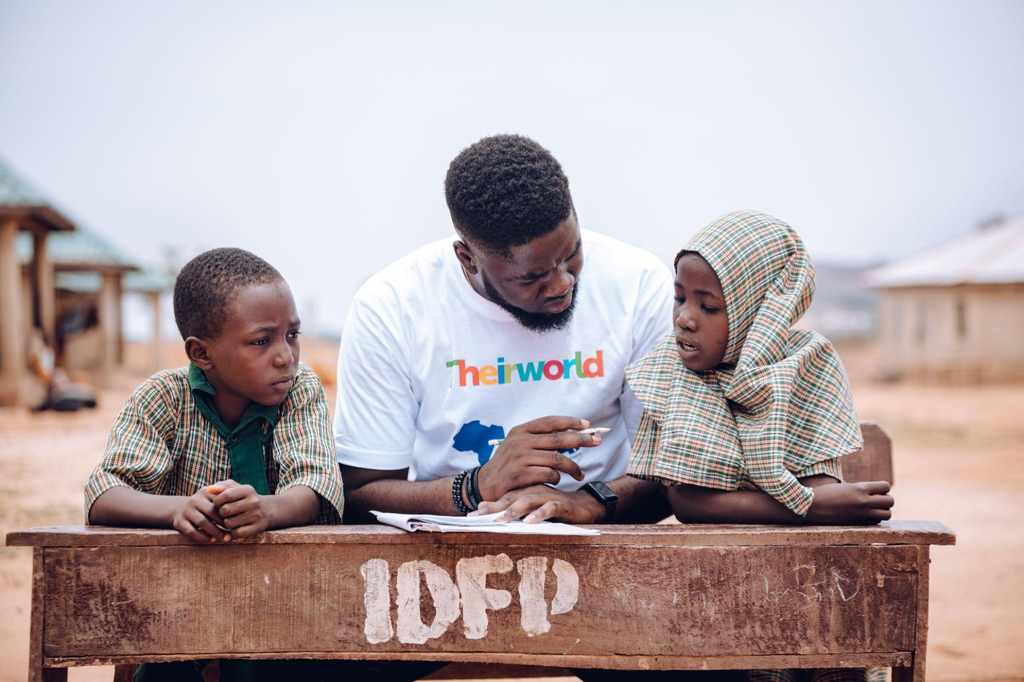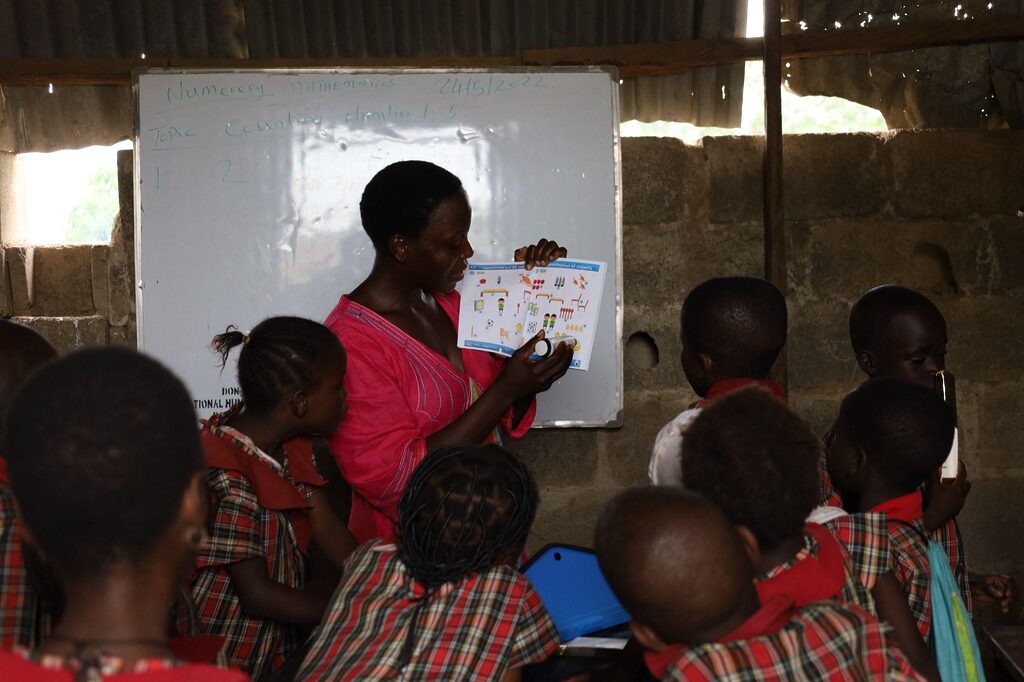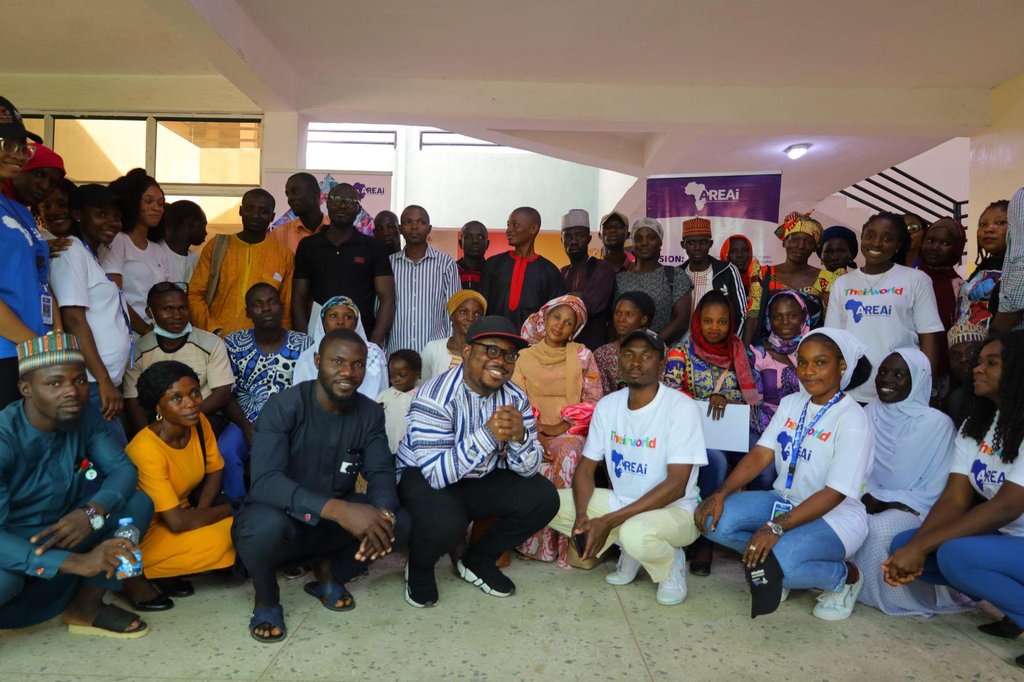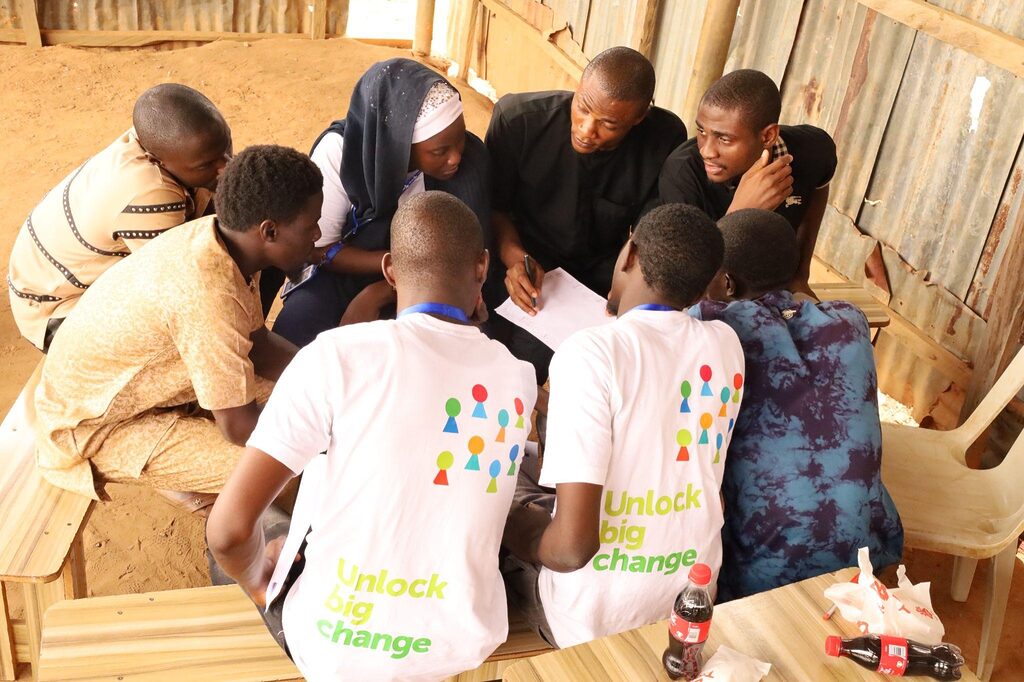
Imagine a child who is in primary 3 and can’t pronounce the word “cup” correctly. Nor can he identify the letters in the word “mother.” Imagine children randomly picked from Primary 4, and they can’t do a normal subtraction of two digits nor identify mathematical symbols like subtraction (-) Plus (+) Division (/). How bad!
Statistically, over 800 million people across the world can’t read and write, and in Nigeria, millions of primary school-aged children lack the basic literacy and numeracy skills needed to complete and transition to secondary education. Despite the fact that primary education in Nigeria is free and compulsory, the picture is worse in the Northern region. With a low rate of attendance and high rate of insurgency and insecurity within communities, day by day, the education future for these children becomes darker, paving way for countless IDP children to be displaced, their learning distorted and stopped.
For some of these IDP children, the little gap of moving and looking for safety with their parents results in years of not being in school nor learning and is dismissed as insignificant; unfortunately, it is this gap that develops into dissatisfying moments for several youths who can’t digest information from reading a newspaper or pick the correct words to use in dialogue.
As learning losses worsened and the global learning crisis heightened, Aid for Rural Education Access Initiative (AREAi), known for closing learning gaps, addressing digital inequity and ensuring skills development for poor and vulnerable children and youth from low-income families, designed FASTTRACK, an accelerated skills development program for out-of-school refugee children in Nigeria.
The program aims to provide 2500 out-of-school children with the fundamental skills to read and write in either English or their indigenous language (Mother Tongue) over a 10-month period, as well as partner with the National Youth Service Corps to launch the Teaching Program, which trains and deploys 250 fellows as FastTrack facilitators to IDP camps.
Also, to bridge the learning gap incurred by these out-of-school children, FastTrack combines three proven, independent teaching and learning approaches: the Mavis Talking book and pen, an offline digital pen with audio capabilities, and a book with unique dot patterns and learner-friendly graphics to aid understanding and comprehension; and the Teaching-at-the-Right-Level methodology, a scalable and effective remedial approach that helps children develop basic reading skills.
Recognizing that the FastTrack program was clearly designed to bridge learning gaps and improve access to education in Nigeria, TheirWorld awarded the organization the first-ever Education Innovation Award in October 2021 in order to scale the impact of FastTrack to reach more children in IDP camps.

Following familiarization visits to several IDP camps in Abuja, FCT, six IDP learning centres, namely Malaysian Garden, Camp David, New Kucingoro, WASSA 1, Paicon, and Pro Labore Centre, were chosen to implement FastTrack for their learners. A series of baseline assessments were conducted in each camp to aid in the identification of each child’s learning gaps, the learning category to which each child belongs prior to implementation, and the learning groups to which they should be assigned for effective learning outcomes.
FastTrack Facilitators’ Workshop was also organized to train the facilitators, local teachers, and Corp members (Program and Impact Fellows) in three methodologies to be used in bridging the learning gaps which after, implementation began in all six camps, with each learner placed in their respective clusters: literacy and numeracy, each with its own set of categories: literacy: beginner, letter words, and paragraph; and numeracy: beginner, 1 digit, 2 digits, and addition and subtraction for learning.

During the course of learning and teaching, a midline assessment was conducted to assess the impact and effectiveness of the FastTrack intervention on these learners, with refresher Training for Teachers/Facilitators to determine what worked and what did not and how more energy can be channelled to produce desired learning outcome for these learners.
Following the program’s completion and several months of learning for all of these learners, endline assessments were conducted in all of the IDP learning centres to check the progress of the learners, and according to the progress report, within 24 days of the FastTrack implementation, the proportion of students who could read words at baseline increased from 7.44 percent to 31.61 percent, while the proportion of students who could divide increased from 4.76 percent to 17.67 percent in numeracy.
Similarly, using the Quasi-Experimental design, an experiment used to assess the impact of a population receiving a specific program intervention versus a control group that did not participate in the program, and for FastTrack, out-of-school children from the Durumi IDP camp served as the control group, FastTrack learners performed excellently better than the control group after in-depth evaluation.
Overall, FastTrack met most of its performance targets, including providing 2,419 children in IDP camps with access to alternative accelerated learning to assist them in developing their foundational skills, thereby reducing the number of children in Nigeria who lack access to learning and foundational skills. Also, a close-out meeting was held with all six camp facilitators and Pifs who contributed to the success of the program.

Numerous impact and success stories were shared, with 98 percent of facilitators confirming the effectiveness of the methodologies used and how the program has impacted all FastTrack beneficiaries in all six IDP camps with basic literacy and numeracy skills needed for them to live a better life.
By 2036, AREAi plans to scale FASTTRACK to reach 1,000,000 out-of-school children in marginalized communities in northern Nigeria with foundational literacy and numeracy skills to engage in future learning for improved educational, employability, and livelihood outcomes.






